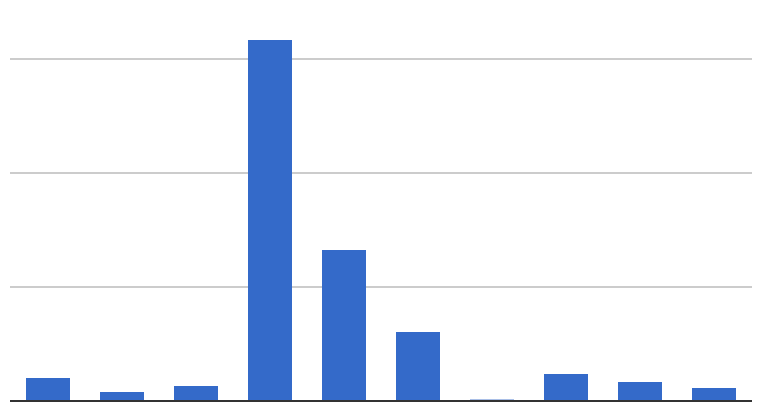So you wrote a good blog post or made an infographic. Maybe you have a product launch story in TechCrunch. Now you want to get it on HackerNews, because the site can send massive traffic.
Don’t.
Seriously, you need to stop trying. I say this not because I don’t want spam; I want you to win! Your efforts to manipulate the site are going to hurt you.
For context, I’ve been posting to HackerNews for years. I would routinely hit the front page.
This matters because getting 10 points and hovering on the second page will send orders of magnitude less traffic. Content marketing is in vogue, and many are learning the hard lesson that over half your efforts should be spent on distribution. Here is a graph of our last 10 blog posts by traffic. Guess which ones got onto HackerNews? Hint: two did well and one did OK on HN.

What used to work: you could get a few friends to submit a story and vote. It seems harmless enough, getting 2 or 3 people to vote on a story right after submitting. It would get you to the front page, and if your post was good enough, it would stay. If you engaged in the comments you could help out the effort. If you asked others to comment, that also helps, but it’s a bigger ask.
What changed is that the software team at YC got a lot bigger. There are people besides pg working on it. They focus on scaling, but also on killing spam. They implemented a voting ring detector that is now incredibly aggressive. Your story will stay alive, but it won’t hit the front page.

So what should you do now?
- Make great content that you think will resonate with the community on Hacker News.
- Ask friends to make comments. If this is about a product, you could ask good customers to chime in. This isn’t that different from asking for a referral or a testimonial on your home page. You could take their comment and repurposed it as a testimonial anyway.
- Think of Hacker News as just one of many places to get a story distributed. There will be downstream positive effects because some small percentage of your audience that promotes your story elsewhere. I’ve been told repeatedly that the #1 source here is the built up list of people that subscribe to get each new blog post. Growing that basis makes distribution higher for every new post.
- Review performance of your content regularly to understand what resonates with what communities. Make sure to track to your real goal, be it recruiting, subscriptions to your mailing list, or signups for your product. You don’t want high traffic to posts which converts very poorly to your goals.
What is our goal for this blog? We make YesGraph, a new product that helps companies grow. We blog to help companies with their growth and explain how to use YesGraph. Our concrete goals for each post are getting more subscriptions to the blog mailing list and getting visitors to try YesGraph. If you see any share buttons or prompts to subscribe, now you know why.
If you have questions, ask me in the comments on Hacker News 😀







